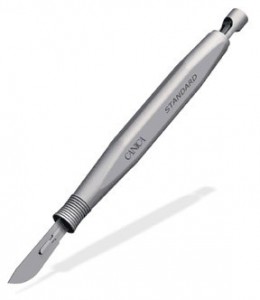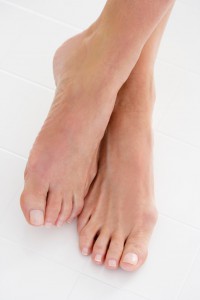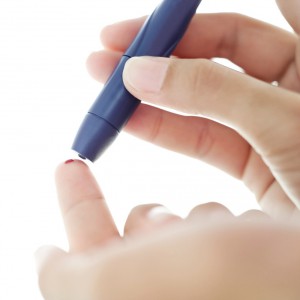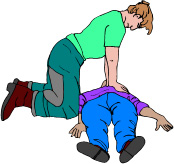Finally able to Lose Weight
I’ve been carrying around lots of extra weight ever since I was pregnant with my only child. Jennifer was born in 1988 and I gained 60 pounds during my pregnancy – mostly during the last trimester (months 7-9) My back went out on me during my seventh month and I had to stop all exercise and any lifting because of the severe pain I was in. This continued after my C-section delivery and I couldn’t even bend over to place Jennifer in her car seat. I was 34.5 old and ever since that time, I’ve had back pain and issues off and on. I know my metabolism took a big hit because during my pregnancy my eyes changed and afterwards I could not stand to wear my contacts. Also before I got pregnant, I could never wear a wrist watch – they all stopped on me. After I gave birth and several months of very little sleep I found I didn’t stop watches anymore and now I can wear one. In 2006 when I was 53, I was able to retire from my FDA job a couple of years early and work full time at my previously part time Photography Studio. But I began having more and more back pain and other health issues, so I had to sell out to my partner in 2009.
Diets, You Name it and I’ve tried It!
Being overweight is the pits. It affects everything in your life but especially your health. I was diagnosed with pre-diabetes, then full blown Type 2 diabetes. I began taking oral meds to control my BG, but then I had to begin injecting insulin to control it. Now I’m on both oral Metformin twice a day and injecting two types of insulin 3 times a day. And my metabolism has been shot. It’s so messed up that losing any pounds at all has been almost impossible. I’ve tried many ways to diet – Weight Watchers, Atkins, Paleo, diet shakes, liquid diets, diet pills – garcino, etc. But nothing has worked and if I lose 3 pounds, it always comes back with a couple more to go.
I know that Type 2 obesity and diabetes is on the rise in the US and I’ve just been another statistic. My weight has made it difficult to control my blood sugar and I’m in a wheelchair because of back and hip pain from my 8 month journey through diabetic induced feet and leg ulcers. My activity outside the home is restricted to doc visits and attending a few meetings of my art league. I spend most of my day in bed because of my pain which has also moved to my left hip and knee. Even when I’m up in my wheelchair, I’m usually in some pain. At night I’ve struggled to sleep because I can’t find a comfortable position and I get up and down all night – finally getting on average about 3 hours of sleep. At my heaviest I’ve weighed 284 pounds with a BMI over 40. Way too much!
Finally Success!
I’m an avid reader and read lots, so I’m always downloading ebooks from Amazon to read on my iPad or Kindle. Mostly I download free eBooks, but on occasion I purchase one I want to read. On August 13th I downloaded “Jumpstart Your Metabolism: How to Lose Weight by Changing the Way You Breath” by Pam Grout.
Actually I began changing some things about my diet during July. On July 6th I weighed in at 277.4 and began drinking more water and trying to eat more veggies. I finished reading Ms. Grout’s book on August 13 and began doing the deep breathing exercise (just the basic one) several times a day. I also decided to only eat when I’m hungry. This has basically worked out that I usually eat breakfast between 10:30and noon. I have a snack around 3pm and dinner around 6pm. When I think I’m hungry, I drink more ice water and see if I’m still hungry. If I am, I try to eat a snack/smaller meal with a protein included. My dinner is regular, however I do try to not have seconds as much as I have in the past. I’ve chosen to not deny myself of sweets altogether. I’ve had ice cream blasts from Sonic, Chocolate Milk Shakes from McDonalds and occasionally a nutty bar or treat that my MIL keeps around the house. I’ve even had pizza, but stopped at 3 slices. I made some gluten free chocolate chip cookies last week and have eaten some of them also. So I’m not deprived. Yet this morning when I weighed, the scale showed my weight as 258.9.
I do not exercise except for some lying down crunches for my back and the deep breathing exercises. I’m using my wheelchair full time so far and move around very little during the day. I’m drinking lots of ice water and trying to include more protein and veggies in my diet in a little smaller portions, but that’s all. For the next month, I’m going to only drink ice water, no more tea or milk or diet drinks (which are not common beverages for me anyway). 277.4 less 258.9 is 18.5 pounds lost so far. I’ll be blogging more about this and adding some more references I found during my research on metabolism and breathing..
In the meantime, you might want to download Pam’s ebook and start using her breathing techniques. Let me know if it works for you also.
Comments
Thanks for looking at my site and coming to this page. I would love for you to leave any questions or comments below. In addition, I’m open to new topics to research and comment on as they pertain to my own health and experience living with diabetes. Please share your interests and questions in your comments. I also love to hear others stories about how they handle their own diabetes issues.
– Shirley








